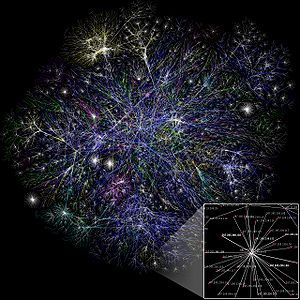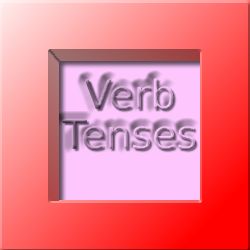5. Further practice
After visiting Melbourne Park and enjoying the fantastic visit to the courts where the Australian Open is held, Paco feels like visiting one of the most famous universities in Melbourne, Swinburne University of Technology, which has six campuses in the state of Victoria and one in Malaysia. This university, founded in 1908 by George Swinburne, who was a famous engineer and politician, is one of the best ones in the state. In fact, there exists a guide in Australia known as Good Universities Guide of Australia which ranked Swinburne University of Technology the best in Melbourne for teaching quality, equal best for graduate satisfaction, along with a five-star rating for cultural diversity in 2009.
 |
| Imagen en Flickr de ToGa Wanderings bajo CC |
The Internet is a global system of interconnected computer networks that use the standard Internet Protocol Suite (TCP/IP) to serve billions of users worldwide. It is a network of networks that consists of millions of private and public, academic, business, and government networks of local to global scope that are linked by a broad array of electronic and optical networking technologies. The Internet carries a vast array of information resources and services, most notably the inter-linked hypertext documents of the World Wide Web (WWW) and the infrastructure to support electronic mail.
Most traditional communications media, such as telephone and television services, are reshaped or redefined using the technologies of the Internet, giving rise to services such as Voice over Internet Protocol (VoIP). The Internet has enabled or accelerated the creation of new forms of human interactions through instant messaging, Internet forums, and social networking sites.
 |
| By Matt Britt. C. Commons |
The origins of the Internet reach back to the 1960s when the United States funded research projects of its military agencies to build robust, fault-tolerant and distributed computer networks. This research and a period of civilian funding of a new U.S. backbone by the National Science Foundation spawned worldwide participation in the development of new networking technologies and led to the commercialization of an international network in the mid 1990s, and resulted in the following popularization of countless applications in virtually every aspect of modern human life. As of 2009, an estimated quarter of Earth's population uses the services of the Internet, which turns it into the most useful and quickly way of communicating and getting information.
The Internet has no centralized governance in either technological implementation or policies for access and usage; each constituent network sets its own standards. Only the overreaching definitions of the two principal name spaces in the Internet, the Internet Protocol address space and the Domain Name System, are directed by a maintainer organization, the Internet Corporation for Assigned Names and Numbers (ICANN). The technical underpinning and standardization of the core protocols is an activity of the Internet Engineering Task Force (IETF), a non-profit organization of loosely-affiliated international participants that anyone may associate with by contributing technical expertise.
1 Adapted from Wikipedia.org
Answer the following questions:
1. According to the text, does the Internet consist of the hypertext documents of the WWW and the infrastructure to support electronic mail?
2. According to the text, has the Internet changed human interactions?
3. Who governs the Internet?
Would you like to have access to a good glossary and dictionary of terms related to computing science? If you do, click here.
In the text, we can find a lot of relative clauses.
1. Identify all the defining relative clauses you can find in it. Underline the antecedent they modify.
2. Identify all the non-defining relative clauses in it. Underline the antecedent they modify.
3. There are also three "reduced relative clauses". Identify them and underline the antecedent they modify. How would you say the whole relative clause?
4. There are also two "sentential relative clauses", that is, two relative clauses which modify or refer to a whole previous sentence. Identify them.
 |
| By CLUC. C. Commons |
Remember that one of the questions in PAU tests are related to a real situation.
Imagine a friend of yours isn't sure of how useful the Internet is and that is why he/she isn't an Internet user yet. Convince him or her to begin using the Internet. Give him or her a good reason for doing so.
Let's practice with other common questions of the PAU tests. We refer to the grammar question, which, as you know, may be of different types.
1. Tense and sentence structures.  |
| Imagen: Creación Propia |
Write the following sentence in the forms and tenses asked in the chart: "An estimated quarter of Earth's population uses the services of the Internet."
| Tense and form | Answer |
| Negative interrogative | |
| Future simple |
|
| Interrogative of the Present Perfect | |
| Negative of the Past Simple |
|
| Interrogative |
2. Passive voice.
Turn the following sentences into the passive voice.
a. The Internet carries a vast array of information resources and services.
b. The Internet has enabled or accelerated the creation of new forms of human interactions through instant messaging
c. An estimated quarter of Earth's population uses the services of the Internet.
3. Direct/Indirect or reported speech.
Turn the following sentence into the reported speech: "After visiting Melbourne Park and enjoying the fantastic visit to the courts where the Australian Open is held, Paco feels like visiting one of the most famous universities in Melbourne" (The narrator said...)
4. Relative clauses.
Join the following pairs of sentences by means of a relative clause. Remember to decide if they are defining or non-defining.
a. Paco visited all the courts at Melbourne Park. It is in the north of the city.
b. He was helped by a guide. The name of the guide was Phillip.
c. He got astonished when he saw the Rod Laver Arena court. Rafa Nadal was training there.